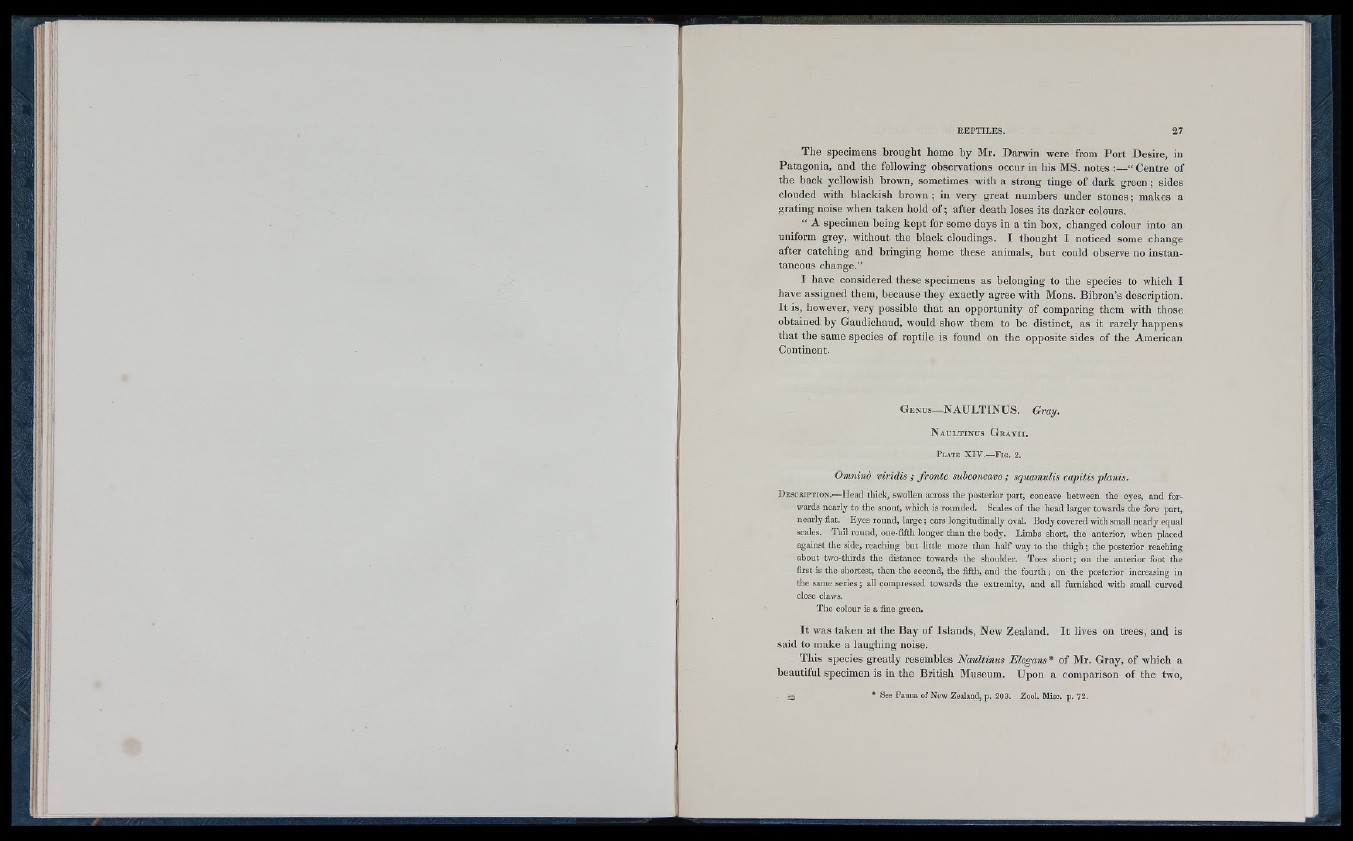
The specimens brought home by Mr. Darwin were from P o rt Desire, in
Patagonia, and the following observations occur in his MS. notes :—“ C entre of
the back yellowish brown, sometimes with a strong tinge of dark green ; sides
clouded with blackish brown ; in very great numbers under sto n es; makes a
grating noise when taken hold o f ; after death loses its darker colours.
“ A specimen being k ep t for some days in a tin box, changed colour into an
uniform grey, without the black cloudings. I thought I noticed some change
after catching and bringing home these animals, but could observe no instantaneous
change.”
I have considered these specimens as belonging to the species to which I
have assigned them, because they exactly agree with Mons. Bibron’s description.
I t is, however, very possible th a t an opportunity of comparing them with those
obtained by Gaudichaud, would show them to be distinct, as it rarely happens
th a t the same species of reptile is found on the opposite sides of the American
Continent.
G e n u s— NAULTINUS. Gray.
N a u l t in u s G r a y i i .
P late X IV .—F ig . 2.
Omninò vii'idis ; fronte subconcavo ; squamulis capitis planis.
D e s c r ip t io n .— H e ad thick, swollen across th e posterior p a rt, concave betwe en th e eyes, a n d forwards
n ea rly to th e snout, which is ro u nded. Scales o f th e h e a d larg e r towards th e fore part,
n e a rly flat. E y e s ro u n d , large ; ears lo n gitudina lly ovaL Body covered w ith small n e a rly equa l
scales. T a il ro u n d , one-fifth longer th a n th e body. L im b s short, th e ante rior, when placed
aga inst th e side, re ach in g b u t little more th a n h a lf way to th e th ig h ; th e posterior re aching
ab o u t two-thirds th e distance towards th e shoulder. Toes s h o rt; on th e an te rio r foot th e
first is the shortest, th e n th e second, th e fifth, an d th e fo u rth ; on th e posterior increasing in
th e same series ; all compressed towards th e extremity, an d all furnished with small curved
close claws.
T h e colour is a fine green.
I t was taken at the Bay of Islands, New Zealand. I t lives on trees, and is
said to make a laughing noise.
This species greatly resembles Naultinus Elegans* of Mr. Gray, of which a
beautiful specimen is in the British Museum. Upon a comparison of the two,
■ 'ij * See Fauna of New Zealand, p. 203. Zool. Misc. p. 72.